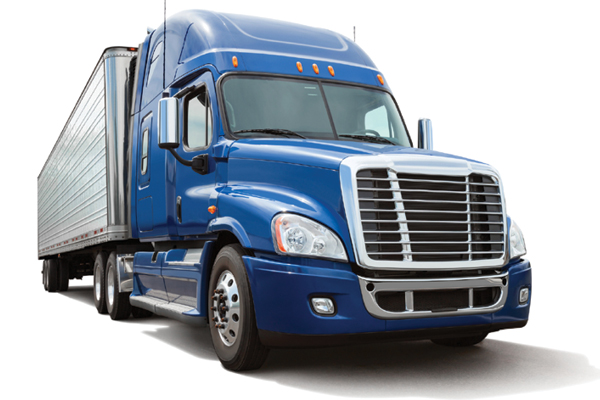Freight Flow and the Economy: Asked and Answered

Arrive Logistics partnered with Transportation Analyst Donald Broughton (left), principal managing partner of Broughton Capital, to address the following crucial questions shippers need to answer about their freight.
What effect is driver retention having on truck capacity?
Normally, fleets average three- to five-percent unseated trucks (trucks without an available driver). Higher driver pay and lower driver turnover have increased capacity by reducing the unseated truck count and by eliminating the lower productivity of the first few weeks of any driver (even experienced drivers are more productive after learning the new carrier’s systems).
Although freight is very strong, why is the delta between asset-based carrier volumes and third-party logistics (3PL) volumes widening? 3PL volumes have steadily decreased in the past several months whereas asset-based volumes are still extremely high.
Freight volumes still exceed capacity. Because we transitioned from very hot to cooler weather, shippers have fewer loads they need to use brokers for. Their core carriers are handling more of those loads.
What should suppliers going into RFP season expect to see in dry and refrigerated freight rates for both full truckload (TL) and less than truckload (LTL) in 2019?
The DAT Barometers are still at levels that indicate higher nominal rates for both TL and LTL in 2019. Percentage-wise, rates will be in the more normal (low-to-mid single digit) range, but still up slightly overall. Reefer rates have more room to go up than do dry van rates, and, of course, it depends on how much of a rate increase suppliers accepted in 2018.
Should we lower truck drivers’ age from 21 to 18? How will that impact driver availability?
Do it. You could make the requirements more stringent—longer training, hair follicle test, more trainer team time—but there is no evidence that older drivers are safer.
Will insurance companies prevent lowering the driver age to 18 years old?
Insurance companies make money by taking risk and charging adequately for it (underwriting gains) and by investing funds paid in while they wait to pay claims (investing gains). Expanding the pool of drivers should make insurance companies more profitable, not less profitable.
Contract prices are currently higher than spot pricing. Some folks are calling for rate increases in 2019. How could this be possible as the gap between spot pricing and contract pricing continues to widen?
Contract prices are normally higher than spot prices, depending on market conditions. In 2018, spot prices shot up above contract prices before falling back below. As spot prices find a floor, and where they find that floor, will tell us much about where contract prices are headed in 2019.
Do you see any red flags in the current freight flow that concern you about the state of the economy?
While overall rail volumes are still positive, the decline in export grain volume is indicative of what can happen as a result of a trade war. If the current trade dispute with China is not settled, or expands, it could threaten a larger volume of freight flows and become increasingly problematic for our economy.
Are there specific industry freight flows to keep an eye on to better understand what is happening in the economy?
Dozens. A few worth mentioning include transpacific air freight vs. semi-conductors and transatlantic air freight vs. the U.S. dollar/euro.
What is the relationship between value, density, and disposability?
The higher the value and lower the density, the more disposable freight tends to be. The lower the value and the higher the density, the more durable it tends to be.
Which is the larger economic indicator—freight flow in relation to chemicals or to lumber?
Chemicals tell us about the industrial economy while lumber tells us about the housing industry. While there are some primary, secondary, and even tertiary relationships between industrial and housing, primary housing is about 13 percent of the GDP, durable manufacturing is about six percent of the GDP, and non-durable manufacturing is about six percent of the GDP. The simple answer is housing is the larger economic indicator by a small margin, but it is more complex than that. When the housing market is expanding through increased lending activity and improved consumer wealth/perceived wealth, it can account for as much as 20 percent of the GDP.
Why do flatbeds have a unique relationship with electronic loading devices?
The trailer-to-tractor ratio is close to 1-to-1, and the driver wants to be involved in loading and securing the freight. There is almost no drop and hook in flatbed, especially on the loading side. This means the loading process (and to a lesser degree, the unloading process) is taken 100 percent out of the driver’s available drive time.

